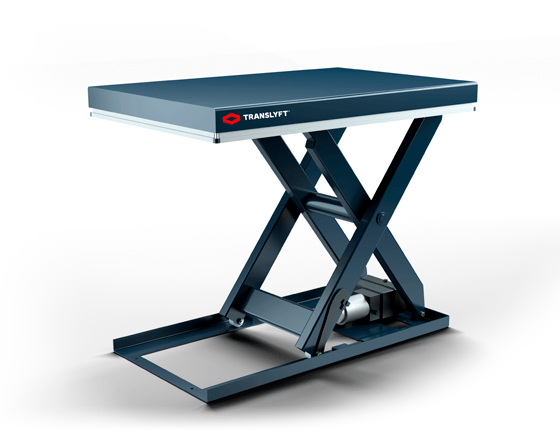Finding the perfect Scissor lift tables should be a detailed examination of the operational requirements. Warehouses have to take parameters like load weight, lift height range, cycle frequency, and environmental factors like temperature and humidity, into consideration. Team Systems takes a consultative approach, working with customers through the specification process to identify models that best balance capacity and footprint. Low-profile scissor configurations maximize stability without hindering aisle clearances, making them the ideal solution for facilities with space constraints. On the contrary, high-lift models offer extended vertical reach to accommodate dock-level loading or access to a mezzanine. Custom deck materials—stainless steel for food processing or powder-coated steel for general logistics—guarantee compatibility with hygiene and durability standards. But by matching equipment selection with specific use cases, warehouses can ensure that both performance and return on investment (ROI) are optimized.
Environmental & Sustainability Specific Considerations
The need for Scissor lift tables in promoting sustainable operations has come into sharper focus as warehouses do their best to reduce their ecological footprint. Team Systems has led the way in the use of eco-friendly hydraulic fluids and energy-efficient electric actuators, reducinggreenhouse gas emissions over pneumatic models. Regenerative braking systems recover kinetic energy during descent cycles, redirecting energy back into the power grid and reducing energy consumption. Logistics managers, by choosing heavy-duty lift tables that are built to last and low maintenance, can avoid replacing prematurely and has less waste making their material handling strategy fit into overall corporate sustainability efforts.
Educating the Workforce
The efficient use of Scissor lift tables depends on well trained personnel who understand not only how to operate the mechanics but also the safety and best ergonomic practices. Team Systems provides complete on-site training classes including proper positioning of platform, emergency stop procedure, and daily inspection checklists. These programs instill confidence in operators so that every team member knows how to get the most from the equipment while being aware of potential hazards. As warehouse positions change in lockstep with automated processes, this kind of ongoing reskilling creates an adaptable workforce ready to master new technologies and workflows without a dip in productivity or safety.
OSHA guidelines and ISO Certification
For every modern warehouse, a grave challenge is navigating the complex landscape of industry regulations, and Scissor lift tables play a foundational role in compliance strategies. Whether they are OSHA guidelines for safe lifting operations or ISO certifications for equipment quality, Team Systems makes sure that every lift table model adheres to or exceeds the current standards. Included pressure relief valves, mechanical locks and CE marking demonstrate proof through rigorous testing and certification process. Logistics teams may ease preparation for audits while avoiding costly fines and boosting a proactive stance towards workplace safety and the law by selecting lift tables that are already compliant with regional and international regulations.
Customization and Scalability for Expanding Operations
The most compelling benefit that comes with using Scissor lift tables from Team system is creating tailored platforms as per the increased requirements of the warehouse. Modular tabletop designs, adjustable stroke lengths, and optional caster configurations enable facilities to quickly reconfigure the workstations in reaction to fluctuating product lines or peak season spikes. Scalable lift table fleets can easily be deployed as needed without heavy retrofit, as businesses grow into new markets, or as higher throughput targets are set. Such flexibility not only protects capital investment but also allows logistics managers to act swiftly to emerging trends in e-commerce and Omni-channel distribution.
Closing Thoughts
Diligent ROI assessments, partnership with reputable suppliers, and visualizing the future of technology trends will ensure smooth and responsive material handling solutions of the organizations for the evolving pressures of the market. In essence, this tactical implementation of lift tables fosters operational excellence that empowers businesses to thrive in the ever-changing landscape of logistics.
Warehouse and logistics professionals who proactively integrate scissor lift tables into their digital strategy, including systems for warehouse management, robotics, and data analytics, will be positioned favorably in the future landscape. Thus, strategic planning must prioritize resources not only for the procurement of equipment, but also for the digital infrastructure and training required to facilitate them into sophisticated workflows.
You may also like
-
How Tax Workpapers Facilitate Easier Audits and IRS Inquiries
-
Fast, Reliable Water Heater Repair Near Me
-
Customized Treatments to Tame Travel Tension: Traveler’s Tranquil Touch
-
E-Invoicing: Transforming Business Transactions in the Digital Age
-
Redefining Comfort and Quality Through Expertly Managed OP Services at All Times


